The list of the best drones available has been growing at speed recently, with some seriously impressive models available offering the latest in UAV technology. These drones, from several manufacturers, all provide unique selling points and come in at a range of price points, so there’s something for everyone in our comprehensive guide.
Most of the drones we’ll cover here feature high-performance cameras offering impressive image quality. But there’s so much more to drones than simply their cameras. For most drone pilots, battery life, size, weight and whether a drone offers a foldable design for easy transportation are important considerations. With the camera, sensor, resolution, photo capabilities and video resolution also playing an important role in buying decisions.
Beyond these most important points, you should also consider the safety features on offer and how these can positively affect your flights. And if you’re buying your first drone you may find that the small beginner models available will provide you with the best starting point. High-quality beginner drones can be purchased for as little as £400/$500, whereas top-end consumer/prosumer models can cost as much as £1800/$2200, so starting small and building up is often the best option.
Best for professional drone pilots
If you’re a professional photographer or videographer looking for the highest possible image quality in a portable and lightweight drone, then look no further than the DJI Mavic 3. This drone features a dual camera with a large Four Thirds 20MP sensor and adjustable aperture in the main camera offering excellent image quality for stills and video.
With video possible at up to 5.1K in standard and Raw formats, stills in Raw and JPEG format and other advanced features it’s a drone that’s aimed at professionals. The Mavic 3’s second camera is much more limited, however, and can only shoot images in JPEG and standard video at 4K 30fps in auto mode, but it does offer a hybrid zoom of up to 24x.
The Mavic 3 features a folding design for easy transportation and the two models available weigh 895g and 899g. The standard model provides 8GB of internal storage, while the more expensive and slightly heavier Cine model includes an internal 1TB SDD with support for Apple ProRes 422 HG video recording. Both models also feature a microSD card slot to expand onboard storage.
This drone is DJI’s flagship ‘consumer’ model and provides up to 46 minutes of flight time with several incredibly useful safety features on offer. The Mavic 3 uses multi vision sensors to sense obstacles, as well as the Advanced Pilot Assistance System (APAS) 5.0, which uses six fish-eye sensors and two wide-angle sensors to sense obstacles in all directions. When enabled, the drone can be set to fly autonomously around obstacles when detected or to brake.
Best portable drone
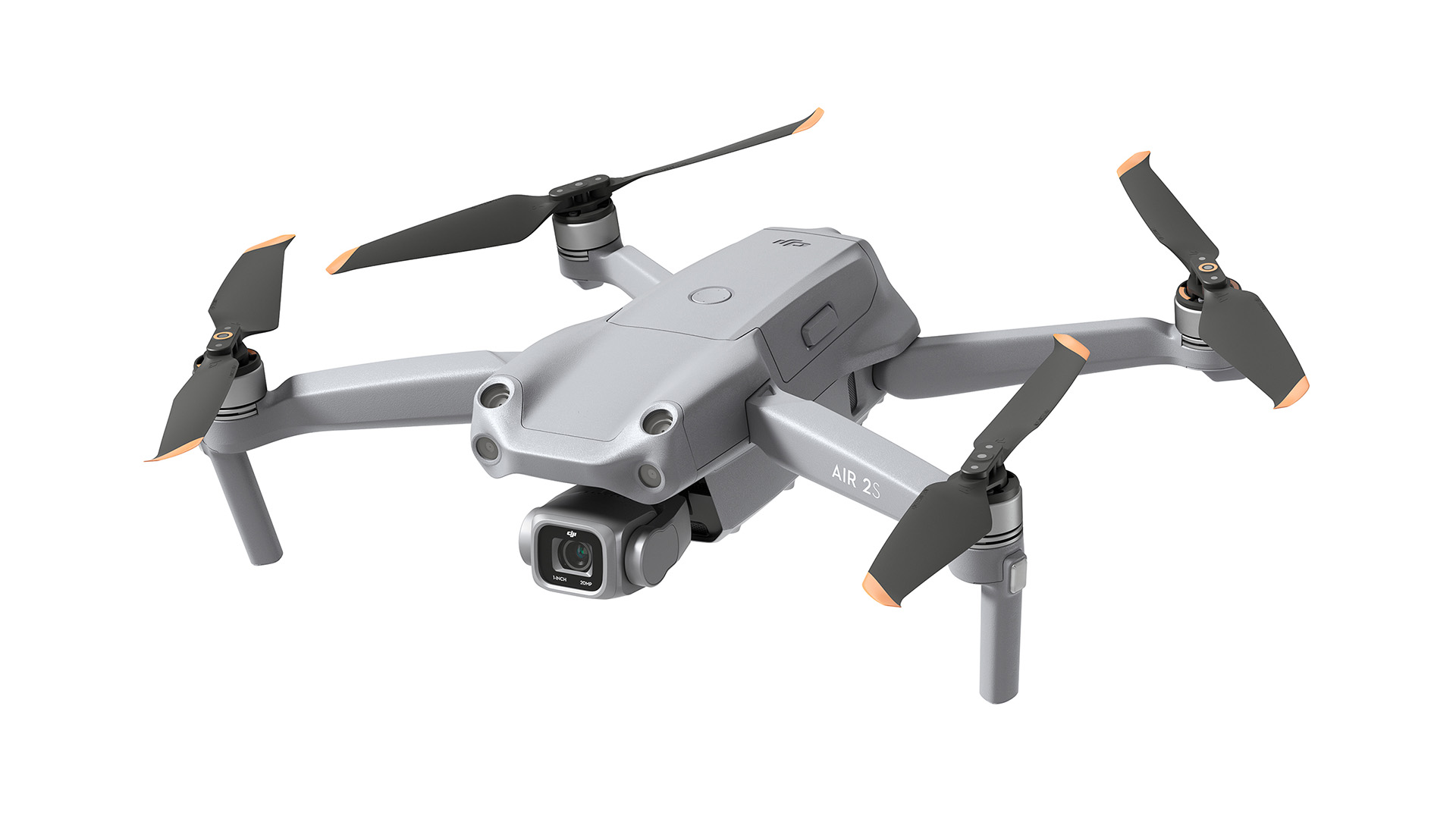
The DJI Mavic Air 2S is the smallest, most lightweight drone featuring a 1-inch sensor available today. This makes it ideal for photographers and videographers who carry other kit with them while exploring the outdoors, or simply those who like small and lightweight tech. The 1-inch 20MP sensor is capable of capturing stills in both Raw and JPEG formats, alongside video up to 5.4K at 30fps, although lower resolutions such as 4K can be captured at higher frame rates.
Like all Mavic models, The Air 2S features a folding design to make it more transportable with a folded size of 180x97x77mm and weight of just 595g. Battery life is advertised as offering up to 31 minutes of flight time and the digital zoom provides up to 8x magnification when shooting FHD videos with a sliding scale to 4x at 4K, allowing you to film subjects without needing to physically fly closer.
The Mavic Air 2S is suitable for both beginners and more experienced drone pilots, with features that make it ideal for both amateur and professional use. Safety features include obstacle sensing in four directions, as well as Advanced Pilot Assistance System (APAS) 4.0 which can be set so the drone flies autonomously around obstacles when detected.
Best for beginners and enthusiasts

If you’re a drone beginner or an experienced pilot looking for the most portable and lightweight DJI drone available, the 249g palm-sized Mavic Mini 2 is a great option. Not only is this drone exempt from requiring the owner to register with the CAA (UK) and FAA (US), it’s also packed with some impressive features despite its diminutive size. With a 1/2.3-inch 12MP sensor, you can shoot stills in both Raw and JPEG format as well as up to 4K video.
It also features a folding design that makes it incredibly small, to the point where you barely notice it being carried in a bag. Flight time is advertised as being up to 31 minutes and there’s also a digital zoom offering up to 4x magnification when shooting FHD video, 3x at 2.7K and 2x at 4K, allowing you to safely get closer to the action you’re shooting.
The features on offer are impressive although there’s no Raw video recording available, but this is unsurprising in a beginner model. And there’s certainly more than enough features to keep even experienced pilots happy. Safety features are pared down compared to more advanced Mavic models in that it doesn’t offer collision/obstacle avoidance, but it does use GPS positioning and offers Return to Home functionality.
Best mid-priced drone
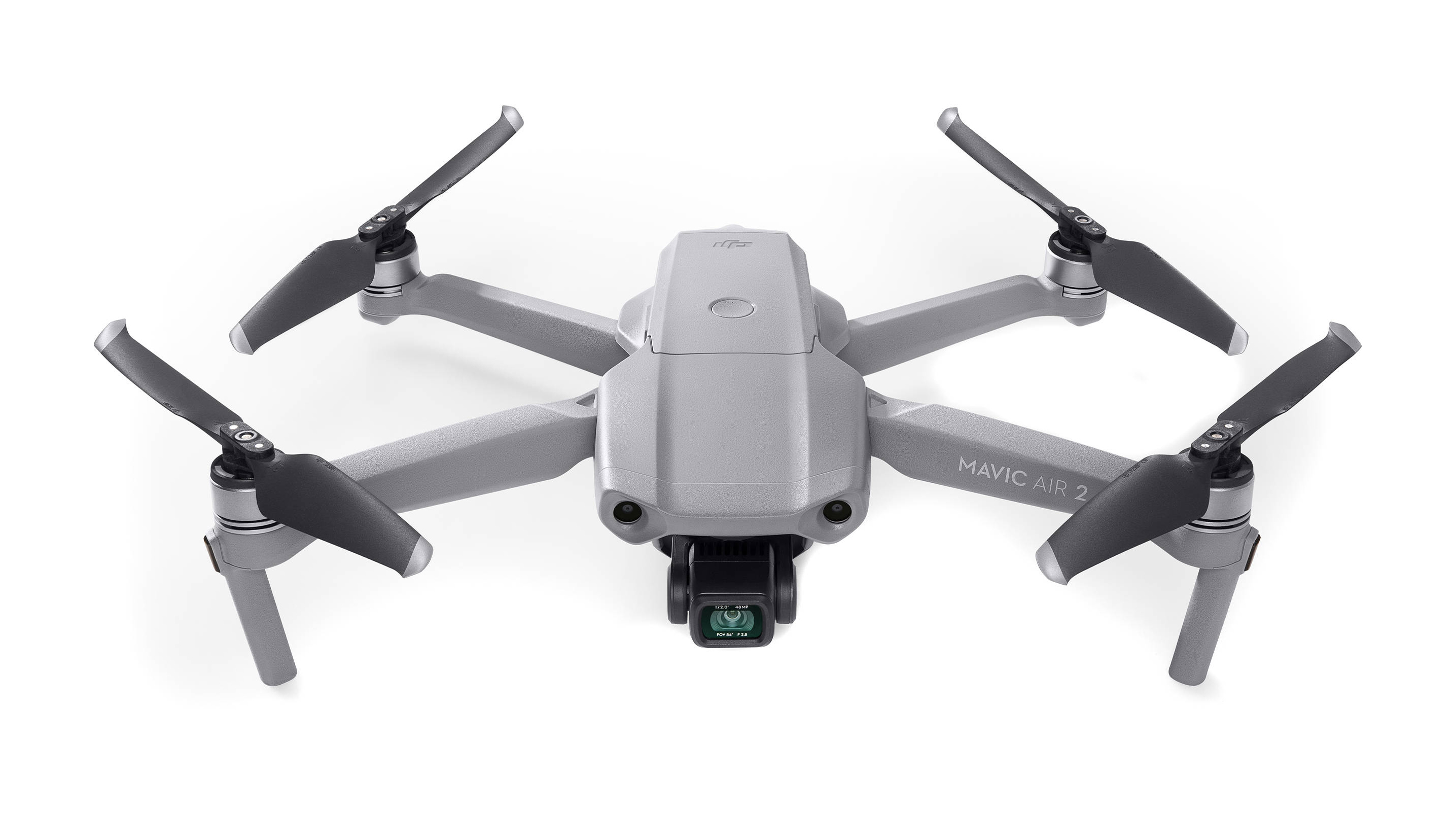
The Mavic Air 2 was closely followed up by the Mavic Air 2S, but this small drone remains highly relevant in the market due to being 25g lighter than the Air 2S at 570g, and most importantly it’s much less expensive making it ideal for those on a budget. With a 1/2-inch 12MP sensor, the Air 2 can capture stills in both Raw and JPEG format, as well as video at up to 4K at 60fps. Plus, the drone can capture video in the D-Cinelike profile (Raw) as well as the Standard profile.
The Mavic Air 2 looks almost identical to the Air 2S and features the standard folding design of the Mavic series. Advertised flight time is up to a respectable 34 minutes and maximum flight speed is up to 42mph in Sport mode. There’s no digital zoom available with this model, but you can capture 48MP stills that are saved as JPEGs so you can crop photos down to achieve a similar effect, and with video you have to zoom into 4K footage slightly and output at FHD in video editing software.
In terms of safety features, the Mavic Air 2 provides front and rear obstacle sensors, plus there are sensors on the bottom of the airframe. The drone also features geofencing to keep it away from restricted airspace such as airports, and Advanced Pilot Assistance System (APAS) 3.0 can be set up to fly around objects when detected or to brake. These, alongside the video functionality, make the Mavic Air 2 a strong beginner option alongside the Mavic Mini 2 despite the larger size.
Best FPV drone
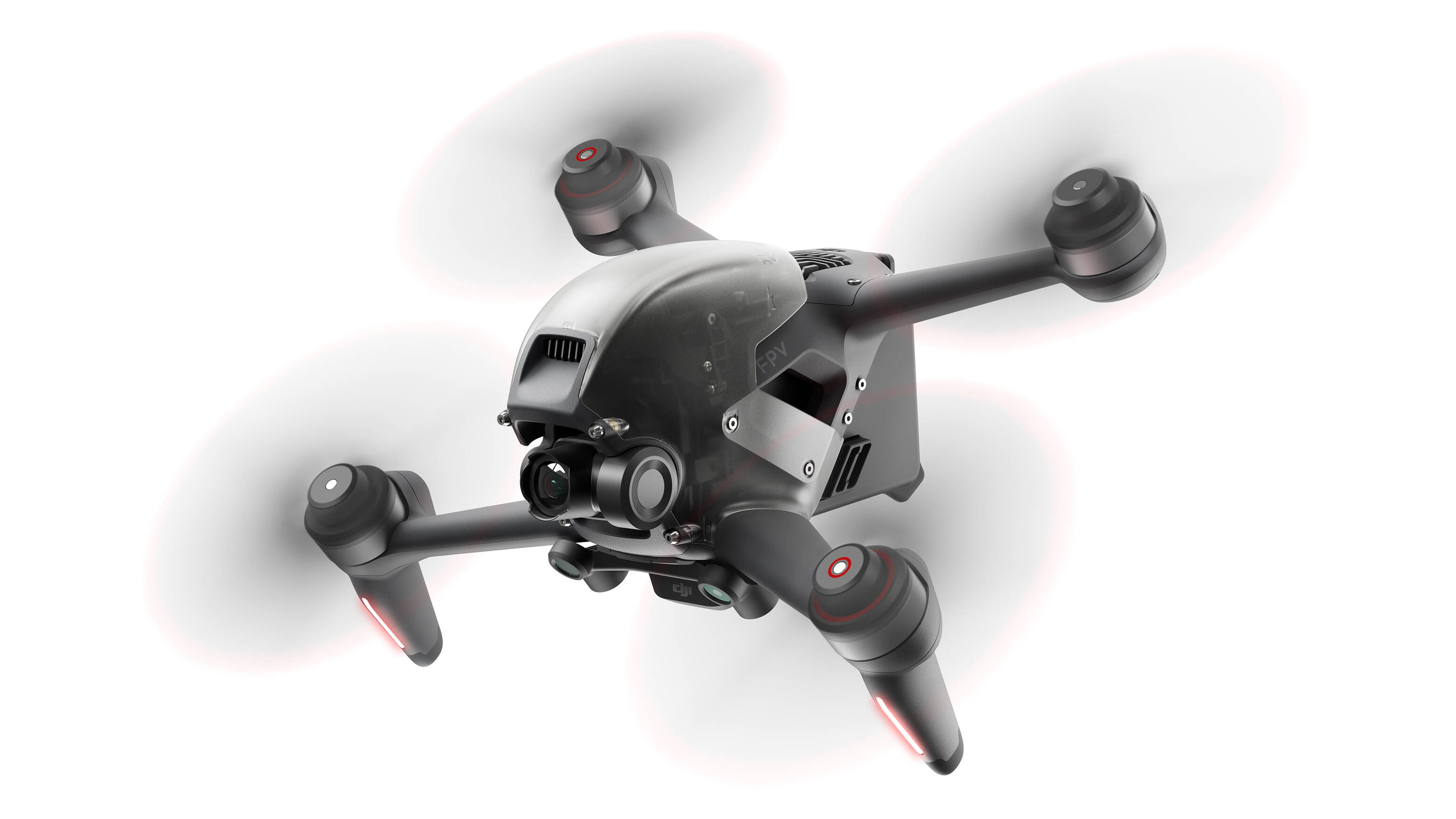
FPV or first-person view drones are traditionally niche and difficult to fly, but with the DJI FPV anyone can enjoy the immersive flying experience and video offered by these drones in an easy to fly package. The FPV comes with DJI Goggles V2 to provide the pilot with a first-person camera view, but this means that you have to always have to have someone with you spotting the drone in the air when flying outdoors to remain safe and legal.
The FPV features a fixed upright body and propeller arms, with the propellers needing to be fitted and removed before and after flight. Battery life is also extremely limited, but where the FPV makes up for this is in the sheer amount of fun it provides and the ability to fly at eye-watering speeds of up to 60mph in Sport mode and up to 87mph in manual mode; although the latter is only for experienced FPV pilots.
This drone is all about video so stills functionality is limited to JPEGs which are mediocre overall, although 4K video looks great and can be captured in a Standard profile, as well as D-Cinelike (Raw). Safety features are limited compared to ‘standard’ drones but it does use GPS positioning in Normal Mode, and sensors alert you to potential collisions and slow the drone down but won’t stop it so great care is needed during flights.
Best for windy conditions
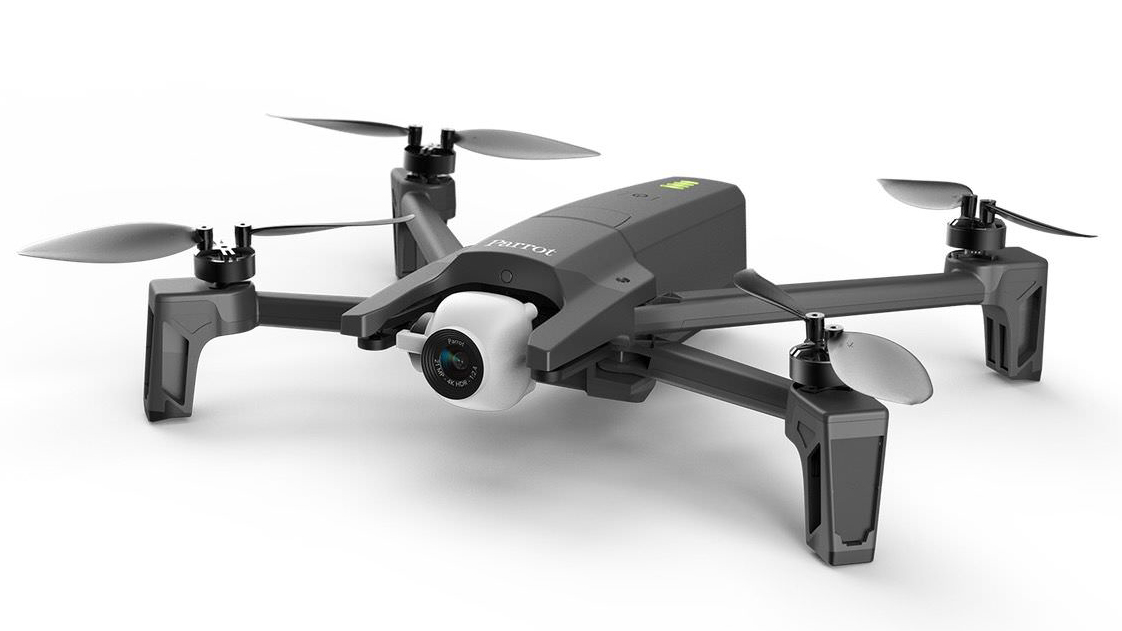
In the world of drones, compact and lightweight options are few and far between, but with the Parrot Anafi you get both of those traits alongside a photo resolution of up to 21MP and video at up to 4K. Plus there’s up to a 2.8x digital zoom that’s claimed to be lossless, alongside standard digital zoom up to 3x. Compared to other drones in this guide, the Parrot Analfi offers generally limited video functionality in terms of frame rates, but this simple approach may appeal to beginners who feel overwhelmed by too many options to choose from.
The Anafi features a folding design which makes it long and thin for transport and storage, and the light weight of just 320g adds to the portability factor. Like most drones, the Anafi features automated flight patterns to make it easy to capture professional-looking videos with ease, but where it differs is that the gimbal only works on 2-axis rather than three, while electronic stabilisation works on 3-axis to provide a hybrid solution.
When it comes to safety features the Anafi only offers GPS positioning to hold the drone in position and avoid drift in wind. Unfortunately, like the DJI Mavic Air 2, there’s no collision avoidance so you have to take care during flights.
Best for high-resolution video

The Autel Evo II Pro is one of the strongest competitors to DJI’s Mavic range thanks to offering a 1-inch 20MP camera with an adjustable aperture that can capture photos in both Raw and JPEG formats. Video is also possible up to 6K at 30fps with Standard and A-Log (Raw) colour profiles available, so it’s a strong performer with some impressive credentials in this area.
In terms of design, the Evo II Pro is a bright orange folding drone with a similar folded and unfolded size to the Mavic 3, although exact specifications are unavailable. It is, however, slightly heavier at 1191g, but it does have a maximum take-off weight of 1999g which means it can safely carry accessories if required and shows that it’s a powerful drone. So much so, that maximum wind resistance is 39mph with a top speed of 45mph.
Safety is also a priority with an Omnidirectional Binocular Sensing System covering 360° supporting collision avoidance alongside precise GPS positioning. Overall, Autel may not be as well-known as DJI, but the technology and impressive features incorporated into its drones make them a strong competitor to the Mavic range, not least because of the ability of the Evo II Pro to shoot higher resolution video.
Best for tracking moving subjects
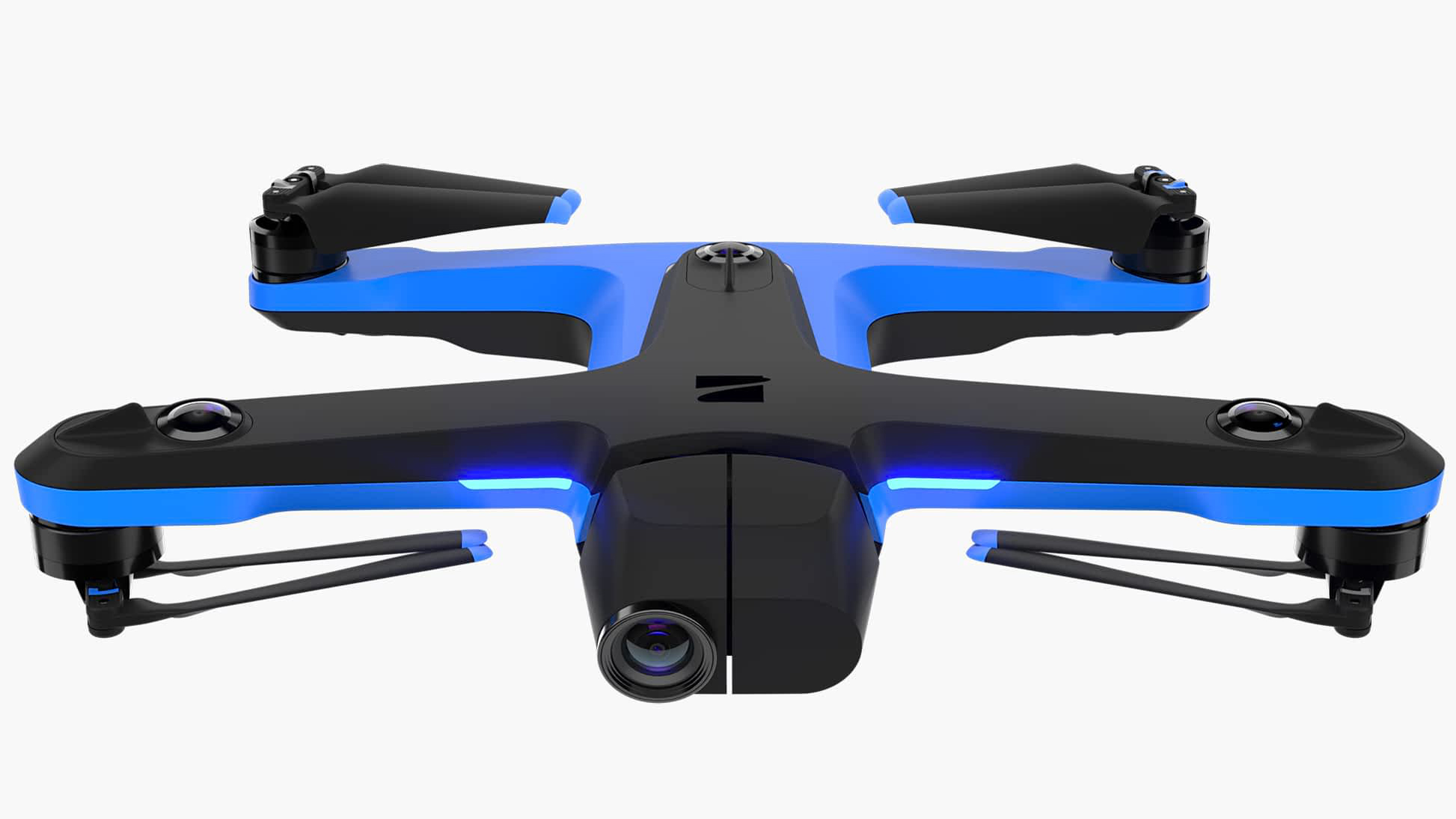
Autonomous flight is a feature most drones offer, but none are as intelligent and successful as the Skydio 2 – a drone that offers the best subject tracking available today. Not to mention, it’s easy to fly for beginners and provides the ability to shoot photos in Raw and JPEG formats as well as video at up to 4K at 60fps. The main downside to Skydio 2 is that it’s currently only available in the United States and Australia.
With a fixed body offering no folding, the Skydio 2 is less transportable than folding drones in terms of shape. But with a weight of 775g, it’s not going to be a burden to carry. It also features an interesting design where the battery attaches to the bottom of the body magnetically with the front propellers facing downwards and the rear propellers facing upwards. The main USP of the drone has to be the market-leading subject tracking and autonomous flight modes that help users to capture incredible tracking videos in even complex environments such as woodland.
In terms of safety features, the Skydio 2 uses a dedicated autonomous flight system with Omnidirectional Super fisheye lenses providing a 360° view for collision avoidance. This is an incredibly impressive drone when it comes to autonomous flight but only provides a battery life of up to 23 minutes.
Best inexpensive toy option
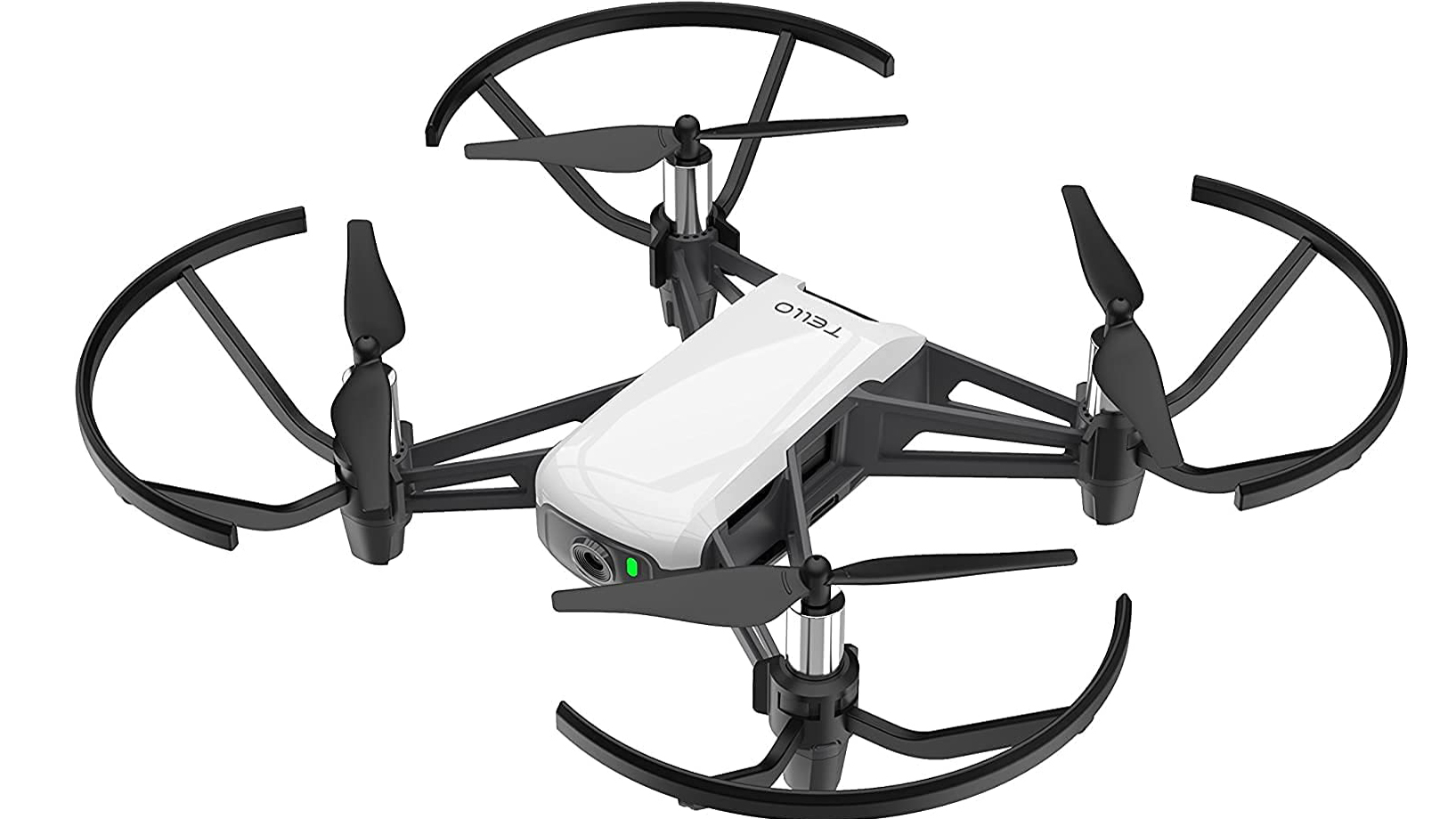
Drones come in two main categories: toys and serious camera drones for shooting photos and videos, and the Ryze Tello by DJI certainly falls into the former category. But while the Tello offers extremely limited photo and video functionality with the 5MP camera producing JPEGs and 720p video, it may provide an inexpensive entry point for beginners to ‘test’ fly a drone to get a feel for how they operate without the risk and fear of crashing a significantly more expensive model.
The limited camera capabilities, lack of a gimbal and maximum flight time of up to just 13 minutes mean that you wouldn’t want to buy this drone for creating high-quality visuals. But that doesn’t mean it can’t be fun, and as previously mentioned provide a stepping stone into the world of drone flying.
In terms of fun, the Tello can be flipped in mid-air, take-off from the palm of your hand and the propeller guards coupled with the small size and low weight of 80g means that you can safely fly the drone indoors. Flight distance is limited to 100m, and most people control the drone using the controls in the smartphone app, plus it can be programmed using Scratch making it an educational and fun device for kids.
Buying advice
Buying a new drone is an exciting prospect because you’re essentially buying a flying camera that will allow you to discover new and interesting views of the world. And whether you’re on a tight budget or you can afford the best model money can buy, drone technology has made leaps and bounds in the last few years so it’s unlikely that you’ll be disappointed.
DJI is undoubtedly the market leader when it comes to drone technology, value, features in general and the number of models available. It’s safe to say that there’s truly something for everyone in the DJI lineup. However, Autel, Parrot and Skydio all provide compelling alternatives and unique features that will certainly appeal to many drone pilots so they’re all worth considering.
One point you must remember is that if you’re buying a drone that weighs more than 249g, you must register as a pilot with the CAA (UK) and FAA (US). Registration is quick, easy and inexpensive, and failure to do so could result in a hefty fine so it’s worth taking the time to do so.

